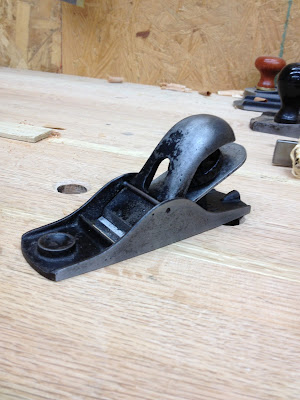Over the last several thousand years we have been using hide glue in one form or another. It feel into obscurity after World War II when PVA glues were commonly available. Over the last 10 years I have had to forget what I thought about woodworking and start fresh. In my shop where there used to be a radial arm saw there is now a hand tool workbench. What used to be my table saw is now a catch all for my hand tool projects. As a matter of fact I have spent more on hand tools than I ever did on power tools. Along with my power tools my glue choices have also changed. My old standard, Titebond I, is replaced by a bottle of Old Brown Glue.
 So as part of my christmas this year I bought some hot hide glue granuals and the book Hide Glue: Historical & Practical Applications By Stephen A Shepherd from Tools for Working Wood. I wanted to learn as much as I could about this "hand tool" and try different formulations. Here were my expectations of the book...
So as part of my christmas this year I bought some hot hide glue granuals and the book Hide Glue: Historical & Practical Applications By Stephen A Shepherd from Tools for Working Wood. I wanted to learn as much as I could about this "hand tool" and try different formulations. Here were my expectations of the book...- How to select the right hide glue for my uses. What gram strength? What formulations (pearls, granules, etc).
- How to properly mix and heat hide glue.
- Tips and tricks on how to mixing and heating easier. For example: A good crockpot/baby warmer setup. Type of containers to use to for the product, baby food jars? Small glue bottles? Anything to make life easier.
- Different recipes to alter how the hide glue performs. I understand there are ways to make hide glue water proof, have a long open time, extremely short open time, and more flexible.
- A little about the history of the glue.
After reading the book I was a little perplexed and somewhat disappointed. Mr. Shepherd obviously did a ton on research. The problem was that he didn't present the information very well. The book seemed more like the notes that someone would take preparing to write a book, not the book itself. There also seemed to be a lot of information either left out or stuck in out of the way places in the book. If I write a book on hide glue my first mission would to be to make sure the reader is very well versed in how to set up a glue pot, what glue to buy, how to mix it, and how to apply it properly. This seemed to be quickly passed over but devotes a great deal of the time on the organic chemistry of the glue. I'm sure there are a few guys out there who would be interested in that. As for myself, I don't care about covalent bonds, simply explain how different properties of the glue work for or against me. This chapter of the book left me feeling like Penny on Big Bang Theory when Sheldon is attempting to teach her physics.
 |
| "It's a warm summer evening circa 1600 B.C..." |
On the good side, there is a ton of valuable information in the book. It's just unorganized. You find yourself looking forever for things. He also delves deeply into the history of the glue. My favorite thing in the book is the glossary. It explains what some of those cryptic ingredients are that you see in a lot of the old woodworking texts. Would I recommend it? Yes, there just simply isn't any other books out there that I know of. I would have like to have seen Mr. Shepherd team up with someone in the woodworking community that deals more in the book publishing side of the world. Surely someone at Popular Woodworking, Fine Woodworking, or Lost Art Press would have been interested in a book like this. To my knowledge there isn't any other books dedicated to hide glue. I have gotten the impression from the blogs and forums that hide glue is making a big come back.
As for my adventures in hide glue, I haven't really gotten started yet. I have hope to get out to the shop soon and begin doing some testing.





















